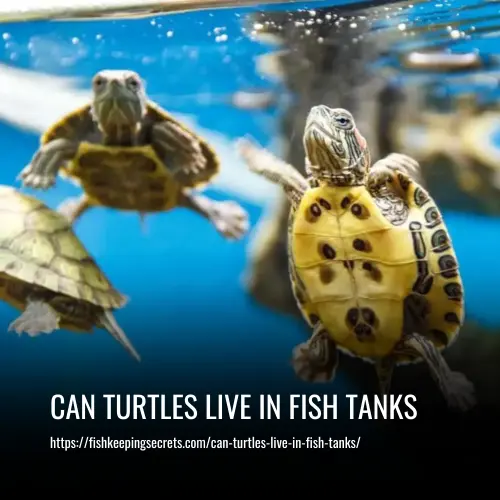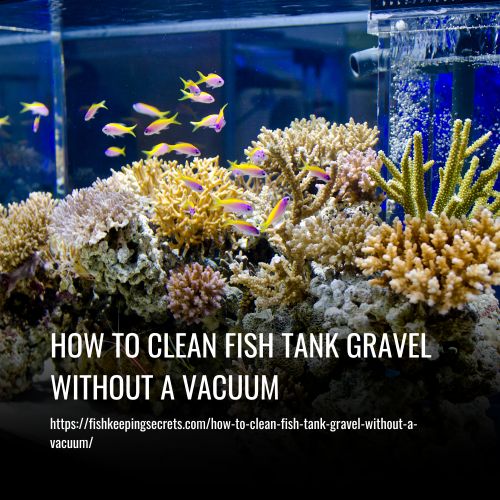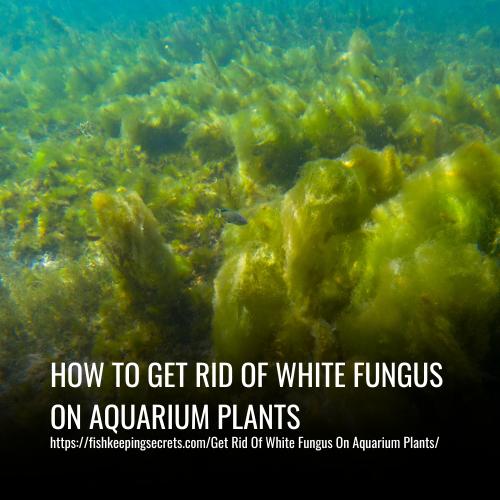Yes, turtles can live in fish tanks. However, their needs must be met to provide a suitable habitat for their health and well-being.
As pets, turtles require a great deal of attention and effort in creating a comfortable environment for them to thrive. One aspect of this is providing them with a proper living space. While fish tanks can be a good option, there are several factors to consider, such as the size of the tank, filtration system, and heating and lighting requirements.
Turtles also need access to land and water areas in their tanks to mimic their natural habitats. It is important to research and consult with experts to ensure that the fish tank is set up correctly and maintained properly for the turtle’s optimal health.

Understanding The Needs Of Turtles
Can turtles live in fish tanks: understanding the needs of turtles
Turtles are fascinating creatures that are cherished by pet lovers. However, adopting a pet turtle comes with responsibilities, including providing a suitable environment that supports its well-being. While some turtle species thrive well in fish tanks, it is crucial to understand their needs before getting one.
In this section, we will delve into the natural habitat of turtles, their physical and environmental needs, and compare their needs with those of a fish tank.
Description Of The Natural Habitat Of Turtles
Turtles are incredibly diverse, with over 318 species recognized worldwide, each having its habitat needs. However, one common feature that they all share is that they are adapted to living in aquatic or semi-aquatic environments. Some species live exclusively in freshwater, while others live in brackish or saltwater environments.
Here are the key characteristics of their natural habitats:
- Large bodies of water or wetlands with a variety of aquatic plants and hiding places.
- A basking area that is exposed to the sun and, in some cases, with access to unexposed areas where they can cool down.
- Water that has proper filtration systems to maintain water quality and remove waste.
- Natural seasonal changes in temperature and daylight hours.
Overview Of The Physical And Environmental Needs Of Turtles To Survive
To keep pet turtles healthy, we must replicate their natural habitat as much as possible. This includes providing the following physical and environmental conditions:
- Most turtle species need a basking area with ample space, warm temperatures, and exposure to uvb light to synthesize vitamin d3, which is essential for their bone health.
- Turtles need clean water with an appropriately designed filtration system and a continuous flow of water to maintain good water quality and prevent diseases.
- Since turtles are cold-blooded, they rely on external temperatures to regulate their metabolism, and thus constant temperature is essential.
- Some turtle species are social and prefer living in groups and frequently interacting with their owners.
Comparison Of The Natural Habitat Of Turtles With A Fish Tank
A fish tank can be a suitable habitat for some turtle species, but they need to be well constructed to support their needs. Here’s how the natural habitat of turtles compares to a fish tank:
- Bask area: A fish tank needs to have an area where the turtle can come out of the water to bask and regulate its body temperature. A platform, rock, or log is needed to create a dry area that is accessible and large enough to hold the turtle comfortably.
- Water quality: The tank’s water requires regular cleaning, and a high-quality filter system is essential to maintain the right water conditions for the turtle. Additionally, the water’s temperature needs to be between 70℉-80℉.
- Space: The turtle requires enough room to swim and move around, particularly for larger species. The minimum tank size for pet turtles is 40 gallons for one turtle, and an additional 10 gallons for each extra one.
- Lighting: Uvb lighting is crucial for the turtle’s health, and a high-quality lamp is required to provide adequate illumination.
Keeping a turtle as a pet is a rewarding experience, but it requires commitment and dedication to providing the right environment for the turtle to thrive. Whether in a fish tank or a custom-made turtle tank, the environment must fulfill all physical and environmental requirements.
The Potential Risks Of Keeping Turtles In Fish Tanks
Can turtles live in fish tanks: the potential risks of keeping turtles in fish tanks
Keeping turtles in a fish tank may seem like a convenient and affordable option, especially for those who live in apartments with limited space. However, this housing option could potentially harm the turtles and lead to behavioral issues in the long run.
Before deciding to keep turtles in a fish tank, it is vital to know about the potential risks and harm that it could cause to these fascinating creatures.
Overview Of The Potential Harm And Risk Of Keeping Turtles In An Unsuitable Habitat
Keeping turtles in a fish tank could lead to various issues such as physical harm, inadequate nutrition, and depression. Here are some of the potential risks and harm of keeping turtles in an unsuitable habitat:
- Limited space: Turtles need ample space to swim around and exercise. Keeping them in a fish tank could restrict their movements, leading to stunted growth and muscle weakness.
- Inadequate filtration: Filtration is essential to maintain water quality in a turtle’s habitat. Without proper filtration, the water could become contaminated with harmful bacteria, leading to respiratory infections and other health issues.
- Poor nutrition: A poorly maintained fish tank could lead to a lack of essential nutrients in turtles’ diet, leading to malnutrition and weakened immunity.
- Sharp objects: Fish tanks can have sharp objects such as rocks and decorations that could harm turtles’ delicate shells and skin.
- Stress: A limited living space could lead to stress and aggression in turtles, leading to depression and other behavioral issues.
Explanation Of The Health Issues That Turtles May Face In A Fish Tank
Keeping turtles in a fish tank could lead to various health issues such as respiratory infections, shell rot, and malnutrition. Here are some of the health issues that turtles may encounter while living in a fish tank:
- Respiratory infections: Poor water quality in a fish tank could cause bacteria to multiply, leading to respiratory infections in turtles. These infections can be fatal if left untreated.
- Malnutrition: A poorly maintained fish tank could lead to a lack of essential nutrients such as calcium and vitamin d3, leading to metabolic bone disease, which weakens turtles’ shells and bones.
- Shell rot: Inadequate filtration and high levels of ammonia in a fish tank could lead to shell rot. This is a bacterial infection that affects turtles’ shells, leading to a loss of mobility and deformities.
- Eye infections: Dust and debris could accumulate in a fish tank, leading to eye infections in turtles.
Description Of The Behavioral Problems That May Arise Due To An Unsuitable Habitat
Keeping turtles in an unsuitable habitat could lead to various behavioral problems such as aggression, depression, and hyperactivity. Here are some of the behavioral issues that turtles may encounter while living in a fish tank:
- Aggression: Turtles living in cramped quarters could become stressed and aggressive towards other turtles and even humans.
- Depression: Limited space and lack of stimulation could lead to depression in turtles. This could lead to lethargy, refusal to eat, and even death.
- Hyperactivity: Turtles living in cramped quarters could become hyperactive, swimming frantically, and even injuring themselves.
Keeping turtles in a fish tank could potentially harm these fascinating creatures and lead to various health and behavioral issues. It is essential to provide them with suitable living conditions to maintain their good health and well-being.
Turtle-Safe Environments For Pet Owners
Turtles are fascinating creatures to keep as pets. They have unique personalities, and owning one as a pet can be rewarding. However, pet owners must make sure that their turtle is living in a safe and healthy environment to thrive.
Here are some key points pet owners need to consider:
Discussion Of Turtle-Safe Environments That Pet Owners Can Create
- Aquatic turtle species are excellent swimmers and need a large enough tank to accommodate their size. The minimum size for a water turtle should be 40 gallons for one turtle and an extra 10 gallons per additional turtle.
- Semi-aquatic turtles need both land and water. Owners must provide them with a basking area that is heated with a lamp.
- The water used for turtles should be dechlorinated and filtered. Turtles love to bask, but they also defecate regularly, which can foul the water. Regular water change is necessary to maintain the turtle’s living environment.
Comparison Of Different Types Of Turtle Habitats
There are many types of turtle habitats in the market, and choosing the right one for your turtle can be daunting. Here are the key points that pet owners need to remember:
- Glass tanks are common, but they can be heavy, and the turtles can quickly outgrow them.
- Plastic tubs and stock tanks are affordable and easy to set up. The downside is that they lack aesthetic appeal and are not durable.
- Custom-built enclosures made of pvc, wood, or acrylic are excellent long-term solutions for your turtles. However, they can be costly.
Explanation Of How Pet Owners Can Ensure That Turtles Are Happy And Healthy
Turtles require a comfortable, healthy environment to thrive. Here are some key points that pet owners need to do:
- Provide your turtle with a healthy diet that meets their nutritional needs. Feeding them a varied diet of protein, greens, and supplements can help your turtle to be healthy.
- Provide proper lighting. Turtles need both uva and uvb lights to support their basking, digestion, and overall health.
- Ensure cleanliness. Turtles need to have a clean habitat and clean water to live in. Regular filter replacements and water changes keep the turtles healthy.
- Give them ample space to move around, exercise, and explore the habitat. Turtles can get bored, and like humans, they need activities to keep them entertained.
Turtles can live in fish tanks, but pet owners must create an appropriate turtle-safe environment. Ensuring that their habitat is clean, healthy, and stimulating is essential in keeping your pet turtles happy and healthy for many years to come.
FAQs
Yes, turtles can live in fish tanks, but it is not ideal for their long-term health. They require large spaces with access to both land and water and need proper lighting, filtration, and heating to thrive.
A turtle needs a minimum tank size of 40 gallons to comfortably live in. However, larger species require larger tanks, and a good rule of thumb is to provide at least 10 gallons of water per inch of the turtle’s shell.
Turtles produce a lot of waste, so a high-quality filtration system is essential. A canister filter is generally the best option because it provides effective mechanical, chemical, and biological filtration.
Turtles can live in tap water as long as the water is treated with a water conditioner to remove harmful chemicals like chlorine and chloramines. However, it’s best to use a water source that has been tested and deemed safe for reptiles.
Turtles require a varied diet including both animal and plant-based foods. Commercial turtle pellets, worms, insects, and leafy greens are all good options. It’s also important to provide a calcium supplement to prevent shell deformities.
Conclusion
It’s important to understand the needs of our pets and provide them with an environment that suits their requirements. In the case of turtles, they need a lot of space to swim, bask, and hunt. While fish tanks may seem like a convenient option, they may not be sufficient for turtles to live and thrive in.
Providing them with a proper habitat with adequate space, filtration, lighting, and heating is crucial. Additionally, turtles are long-lived pets that require a lot of care and attention. As responsible pet owners, it’s our duty to ensure that they have a healthy and happy life.
With proper research and understanding, we can create a suitable and safe home for our aquatic pets. Let’s prioritize the well-being of our beloved turtles and give them the life they deserve.



